20D.40.25 Site Design Standards.
20D.40.25-010 Purpose.
The purpose of this section is to establish criteria for development-wide design and improvements relative to natural features, critical areas, open space and recreation, safety, lighting, service areas, and storm water facilities. (Ord. 2486; Ord. 2340; Ord. 1993)
20D.40.25-020 Natural Features, Sensitive Areas and Shorelines.
(1) Intent.
(a) To encourage the integration of critical areas and shorelines into the site plan and development proposal as site amenities.
(b) To reduce natural hazards and impacts on the natural environment, and to minimize the visual impact of development on hillsides and shorelines.
(c) To preserve natural features, critical areas and shorelines in a manner which links natural systems and habitat rather than creating isolated pockets of such areas.
(d) To encourage development to respect natural landforms and to use them to provide definition between various parts of the community and to provide project identity;
(e) To encourage enhancement of natural landscapes and preservation or enhancement of identified public view corridors to natural landforms or water bodies after initial clearing and development.
(2) Design Criteria.
(a) Preserve and enhance natural features to create a desirable environment for residents, tenants and employees. Provide visual access areas, and where safety and function allow, physical access to natural features, sensitive areas and shorelines.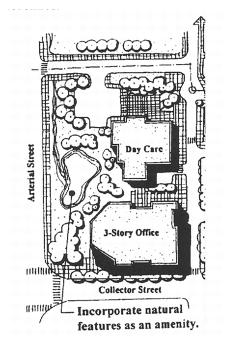
Figure 6: Natural Features and Sensitive Areas Criteria (2)(a) and (2)(b) of this section.
Incorporate sensitive areas into the site design and provide visual and, when appropriate, physical access into the open space.
(b) Provide for a transition from built features to significant natural features.
(c) Where possible, critical areas and shorelines should be linked with other critical areas or open spaces on adjacent properties or to adjacent open space corridors.
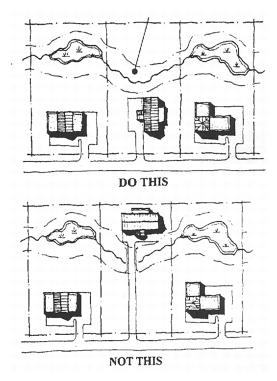
Figure 7: Natural Features and Sensitive Areas Criteria (2)(c) of this section.
Link sensitive areas to those on adjacent properties.
(d) Preserve stands of significant trees.
(e) Development on hillsides should minimize visual and environmental impact by incorporating the following techniques as appropriate:
(i) Locate buildings and other development structures below prominent ridgelines.
(ii) Retain existing wind-resilient vegetation along ridgelines.
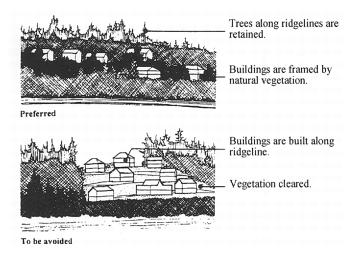
Figure 8: Natural Features and Sensitive Areas Criteria (2)(e) of this section.
Hillsides can be developed while retaining the natural landscape, preserving the ridgeline, and providing views.
(iii) Minimize potential erosion, slope stability and drainage problems by conforming buildings and other impervious surfaces to the existing topography and natural drainage systems.
(iv) Revegetate cleared areas using native trees and shrubs. (Ord. 2486; Ord. 2340; Ord. 1993)
20D.40.25-030 Open Space and Recreation.
(1) Intent.
(a) To provide open space and recreation areas that serve one or more of the following purposes: buffering, preservation of natural areas, and active and passive recreation;
(b) To link open space and recreation areas within the development and, where appropriate, to contiguous properties and other public open space, parks and trails;
(c) To encourage the preservation and enhancement of views within or from a development;
(d) To coordinate the design of storm water and open space so that the facilities can be multi-purpose, functional facilities that appear as natural features and pleasing open space areas.
(2) Design Criteria.
(a) Design open space to enhance and preserve outstanding natural site features.
(b) Use open space, setbacks, tree protection areas, or sensitive areas as buffers between the existing uses and proposed uses when there is significant contrast in land use type or intensity.
(c) Open space should be organized into a general system of integrated or connected spaces.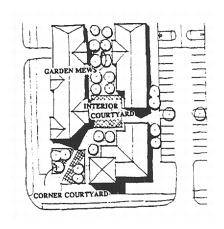
Figure 9: Open Space and Recreation Criteria (2)(c) of this section.
Several kinds of open space can be created by careful siting of buildings.
(d) Open space should be linked to open spaces on adjacent properties.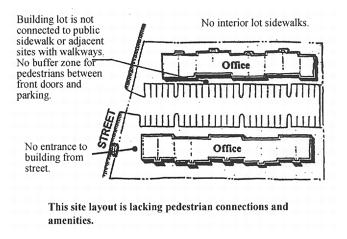
This site layout is lacking pedestrian connections and amenities.

This design scheme illustrates a well-conceived, pedestrian-oriented site design concept.
Figure 10: Open Space and Recreation Criteria (2)(c) and (2)(d) of this section.
(e) Environmental conditions, such as critical areas, shorelines, solar access, microclimates, views, and privacy should determine the siting of open space, buildings, parking areas, and streets.
(f) Surface storm drainage systems should have a natural-occurring appearance and should be designed to complement existing landforms and proposed open space rather than appear as rigid engineered shapes.
(g) Views through a development, where identified as public view corridors or shoreline views, should be preserved, opened up or designed to become part of the surrounding open space focus. Designs that offer views or partial views into interior open spaces are encouraged.
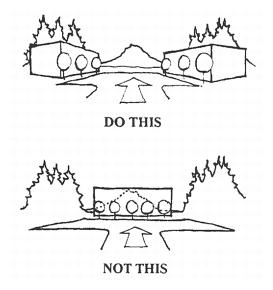
Figure 11: Open Space and Recreation Criteria (2)(e) and (2)(g) of this section.
Siting buildings to preserve views enhances open spaces.
(h) Where appropriate, open space should be contiguous with required natural buffers.
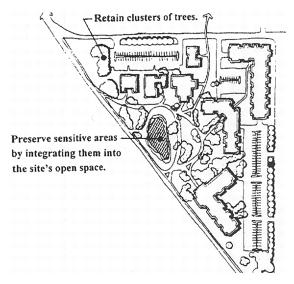
Figure 12: Open Space and Recreation Criteria (2)(h) of this section.
Incorporate sensitive areas into open space plan.
(i) Recreation open space should be designed to provide readily accessible places for informal and formal recreation to occur.
(j) Where a proposed development abuts or includes areas designated as parks, open space or open space corridors (City of Redmond Comprehensive Plan), the required parks, trails, or open space shall be designed and located using the following criteria:
(i) Locate the required park, open space, or trail next to or connected to the designated park, open space or open space corridor.
(ii) Where appropriate, locate parks, open space or trails to increase access to waterfront and recreation areas. The design of waterfront and recreation areas should address safe access, maintenance of improved areas, and protection of sensitive areas.
(iii) Where a proposed development abuts a public park, recreation facility, or trail provide a connection, such as a sidewalk, pathway, greenway, or multi-purpose trail. The development shall not block access to the park or recreation facility from adjacent areas.
(k) Residential uses shall provide for active recreational uses through the provision of specific outdoor activities and play areas and/or linking open spaces to pedestrian or bicycle trails.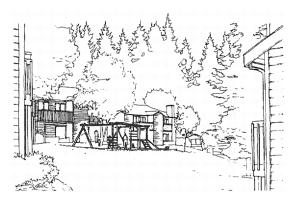
Figure 13: Open Space and Recreation Residential Criteria, (2)(i) and (2)(k) of this section and Site Design for Safety Criteria, RCDG 20D.40.25-050(2)(d).
This “tot lot” is accessible from the residential units. Its central location allows for easy monitoring of activities.
(l) Commercial and industrial developments should create a desirable environment for employees. Design the building and site in a manner that provides visual access and, where appropriate, physical access to attractive natural features, such as shorelines, unusual landforms, or critical areas on the site.
Figure 14: Open Space and Recreation Criteria (2)(a) and (2)(i) of this section.
This development integrates a variety of open space types: natural features, common open space, and active recreational areas.
(Ord. 2486; Ord. 2340; Ord. 1993)
20D.40.25-040 Pedestrian Plazas.
(1) Intent.
(a) To provide plazas that attract shoppers to commercial areas. In heavily used pedestrian areas, or in areas where increased pedestrian activity is desired, a portion of the required open space should be designed as a pedestrian plaza or pedestrian-oriented space.
(b) Where appropriate in the business park and industrial areas, plazas should be provided to enhance the public’s use of the space for passive activities, such as resting, reading, and eating lunch.
(2) Design Criteria.
(a) Provide pedestrian plazas at key locations. A pedestrian plaza is an area between a building and a public street, or between buildings on a pedestrian path that provides visual and pedestrian access onto the site. The plaza should provide pedestrian-oriented amenities and landscaping to enhance the public’s use of the space for passive activities, such as resting, reading, picnicking, etc.
(i) Use trees and other landscaping to provide some shady areas and a visual amenity.
(ii) To qualify as a “pedestrian plaza” an area must have:
(A) Pedestrian access (including handicapped access) into the plaza from the public right-of-way;
(B) Paved walking surfaces, such as concrete, brick pavers, or other type of paver;
(C) Security lighting onsite or building mounted.
(iii) A “pedestrian-oriented space” is encouraged to have:
(A) Site furniture. The design may use planters, rails, benches, retaining walls and other raised surfaces for seating. Cluster some seating for informal gathering and outside eating areas. Wherever possible, locate seating for sun exposure, where views can be taken advantage of, and near to activity centers of a site such as at building entrances and at the intersection of walkways.
(B) Artwork, or amenities, such as fountains, kiosks, etc.
(iv) A “pedestrian-oriented space” shall not have:
(A) Adjacent unscreened parking lots.
(B) Adjacent unscreened chain link fences.
(C) Adjacent “blank walls” without “blank wall treatment,” such as landscaping, windows or murals. (Ord. 1993)
20D.40.25-050 Site Design for Safety.
(1) Intent.
(a) To ensure that site design encourages personal safety.
(2) Design Criteria.
(a) Site design should enable a passerby to see the public spaces or activities occurring on the site.
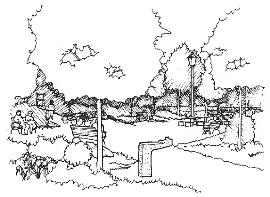
Figure 15: Site Design for Safety Criteria (2)(a) of this section.
Open space that is visually open and well lit provides security.
(b) Site design should avoid creating potential entrapment areas.
(c) Buildings should be arranged on the site to overlook pedestrian routes and parking areas to allow for informal surveillance of these areas.
(d) Housing units, offices or other uses that allow for informal surveillance should surround courtyards and open spaces.
(e) Arrange a mixture of uses to minimize isolated areas that may be unsafe. (Ord. 1993)
20D.40.25-060 Site Lighting.
(1) Intent.
(a) To minimize the impacts of lighting on night skies throughout the City;
(b) To reduce the general illumination of the sky in Redmond’s residential neighborhoods, in the Sammamish and Bear Creek Valleys, and over Lake Sammamish;
(c) To reduce horizontal light glare and vertical light trespass from a development site onto adjacent residential and commercial development and onto natural features, shorelines and sensitive areas;
(d) To encourage the use of lighting in conjunction with other security methods to increase site safety;
(e) Lighting should not be used to market or advertise. Lighting may be used to enhance building, landscaping, or site elements.
(2) Design Criteria.
(a) Site lighting should not trespass onto adjacent uses, particularly residential uses, shorelines and critical wildlife habitat.
Figure 16: Site Lighting Criteria (2)(a), (2)(c) and (2)(f) of this section.
Lighting should be sufficient for security and identification without allowing light trespass onto adjacent sites.
(b) Lighting should be provided at consistent levels with gradual transition to unlit areas. Avoid creating highly contrasting pools of light and dark areas which can be temporarily blinding.
(c) Design lighting to enable users to identify a face 15 yards away, in order to reduce anonymity and to give the pedestrian the opportunity to choose another route.
(d) Use pedestrian-scaled lighting where there is pedestrian activity.
(e) Parking lot light fixtures shall be nonglare and mounted no more than 25 feet above the ground to minimize the impact onto adjacent properties. All fixtures over 15 feet in height shall be fitted with a full cutoff shield.
(f) All building lights shall be directed onto the building itself or the ground immediately adjacent to it. The light emissions should not be visible above the roofline of the building.
(g) Within the shoreline jurisdiction, development proposal shall demonstrate compliance with the City’s “dark skies” policies, such as demonstrating that light levels are the minimum necessary for safety and essential site functions.
(h) Lighting for sports fields, driving ranges and similar intensive recreational uses within the shoreline jurisdiction shall incorporate cut-off shields, and shall incorporate plantings of native conifers to screen the development from the shoreline. (Ord. 2486; Ord. 1993)
20D.40.25-070 Service Areas.
(1) Intent.
(a) To reduce the visual and physical impacts of service areas, mechanical equipment, trash and recycling containers, and other similar uses on other on-site uses, the street environment, adjacent shoreline areas and other public open spaces, and adjacent properties, while maintaining accessibility for service providers and users.
(b) To mitigate the off-site visual impacts of service and mechanical equipment areas when siting alone does not adequately mitigate impacts.
(2) Design Criteria.
(a) Services and outdoor storage areas, large utility cabinets and mechanical equipment, and waste receptacles (trash dumpsters, compactors, and mechanical equipment) shall be located away from highly visible areas, such as streets and public shoreline areas, to minimize visual, noise, or physical impacts on the site, street environment, adjacent public open spaces, and adjacent properties.
(b) Locate waste receptacles in areas convenient for on-site use and accessible for collection.

Figure 17: Service Area Criteria (2)(a) and (2)(b) of this section.
Locate service elements away from the street edge and generally not visible from the sidewalk.
(c) When service elements and outdoor storage areas (dumpsters, refuse, and recycling collection areas) are visible from the sidewalk, shoreline public access areas or adjacent properties, the elements shall be screened from view using materials and colors consistent with the design of the primary structure(s) on the site. Utility cabinets and small-scale service elements may be screened with landscaping and/or structures.
Section of mechanical penthouse.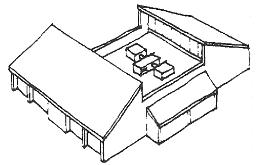
Mechanical equipment screen by clerestory roofs and parapets.
Roof wells conceal mechanical equipment.
Figure 18: Service Area Criteria (2)(d) of this section.
Alternatives for using architectural features to screen rooftop mechanical equipment.
(d) Rooftop mechanical equipment shall be screened from view by such methods as roof wells, clerestories, or parapets.
(e) Design screening with consideration of views from adjoining hillsides and from other areas of high public visibility, with special consideration for views from SR 520, Redmond Way, other major arterials, Marymoor Park, and the Sammamish River Trail.
(f) Design and select landscaping and structural materials of sufficient size, quantity, and height to effectively screen service elements and to make them compatible with associated buildings.
Figure 19: Service Area Criteria (2)(f) and (2)(g) of this section.
A well-designed screen for dumpsters.
(g) Screening should incorporate landscaping.
(h) For all types of service area screening, use materials and colors that are consistent and compatible with those used for the building.

Figure 20: Service Area Criteria (2)(g) of this section.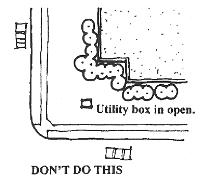
Use landscaping and other site design methods to screen utility vaults and mechanical equipment.
(Ord. 2486; Ord. 1993)
20D.40.25-080 Storm Water Facilities.
(1) Intent.
(a) To provide options for storm water facilities that are visually attractive;
(b) To incorporate open storm water facilities into project site design and landscaping as a design amenity;
(c) To avoid potential hazards between persons and storm water facilities.
(2) Design Criteria.
(a) Design storm water facilities to appear as naturally occurring features.
(b) Storm water facilities should be designed to address the following:
(i) Incorporate screening elements and landscaping into biofiltration swale design so the swale is located and designed as a positive landscaping feature.
(ii) The swale or pond should be oriented so it does not impede pedestrian circulation or shared parking between two or more properties.
Figure 21: Storm Water Facilities Criteria (2)(b)(ii), (2)(b)(iii) and (2)(b)(vi) of this section.
Biofiltration swale cross-section.
(iii) Trees may be planted near biofiltration swales as long as they will not inhibit vegetative growth within the swale.
(iv) Drainage swales should be planted with shrubs or grasses (sedges, for example) which are tolerant to standing water or wet conditions.
(v) Pedestrian bridges are acceptable where such crossings are necessary.
(vi) Incorporate landscaping and screening to visually enhance the swale without reducing maintainability and sun exposure.
(vii) Adjacent to natural shoreline areas, above-ground stormwater facilities shall be landscaped with native plants, and should include snags, nest boxes or other habitat features as appropriate for the scale, function and location of the facility.

Figure 22: Storm Water Facilities Criteria (2)(a) and (2)(b) of this section.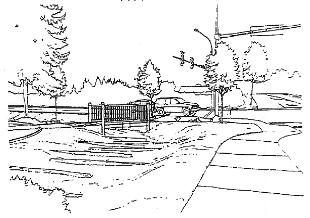
Figure 23: Storm Water Facilities Criteria (2)(b)(ii) and (2)(b)(iv) of this section.
These storm water facilities are well integrated into the front yard and parking lot landscaping.
(Ord. 2486; Ord. 1993)


